Solar eclipse of October 14, 2004
A partial solar eclipse occurred on October 13–14, 2004. A solar eclipse occurs when the Moon passes between Earth and the Sun, thereby totally or partly obscuring the image of the Sun for a viewer on Earth. A partial solar eclipse occurs in the polar regions of the Earth when the center of the Moon's shadow misses the Earth. It was the 54th eclipse of the 124th Saros cycle, which began with a partial eclipse on March 6, 1049 and will conclude with a partial eclipse on May 11, 2347.
| Solar eclipse of October 14, 2004 | |
|---|---|
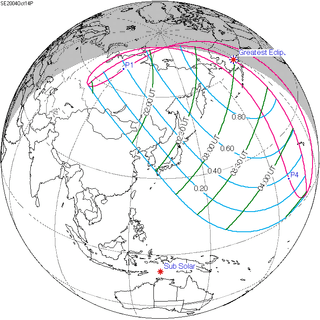 Map | |
| Type of eclipse | |
| Nature | Partial |
| Gamma | 1.0348 |
| Magnitude | 0.9282 |
| Maximum eclipse | |
| Coordinates | 61.2°N 153.7°W |
| Times (UTC) | |
| Greatest eclipse | 3:00:23 |
| References | |
| Saros | 124 (54 of 73) |
| Catalog # (SE5000) | 9518 |
Images
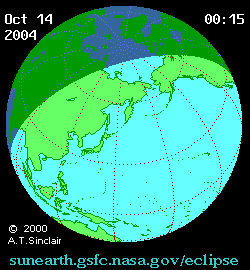
Animated path
Related eclipses
Eclipses of 2004
Solar eclipses 2004–2007
This eclipse is a member of a semester series. An eclipse in a semester series of solar eclipses repeats approximately every 177 days and 4 hours (a semester) at alternating nodes of the Moon's orbit.[1]
| Solar eclipse series sets from 2004–2007 | ||||||
|---|---|---|---|---|---|---|
| Ascending node | Descending node | |||||
| Saros | Map | Gamma | Saros | Map | Gamma | |
| 119 | 2004 April 19 Partial (south) |
-1.13345 | 124 | 2004 October 14 Partial (north) |
1.03481 | |
129_(cropped).jpg) Partial from Naiguatá |
2005 April 8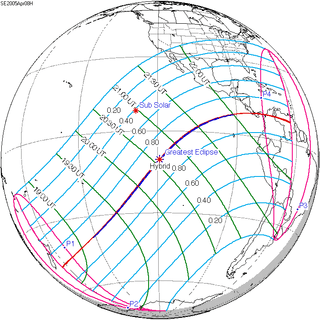 Hybrid |
-0.34733 | 134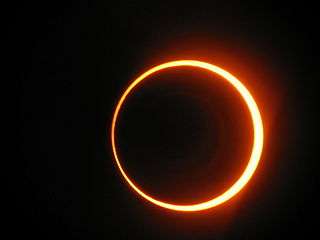 Annular from Madrid, Spain |
2005 October 3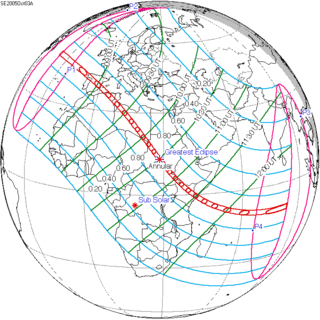 Annular |
0.33058 | |
139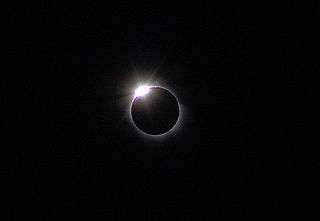 Total from Side, Turkey |
2006 March 29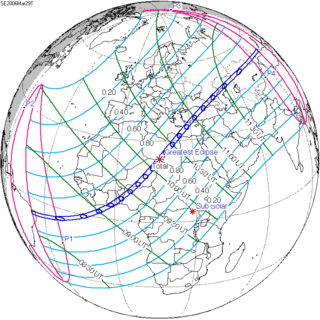 Total |
0.38433 | 144.jpg) Partial from São Paulo, Brazil |
2006 September 22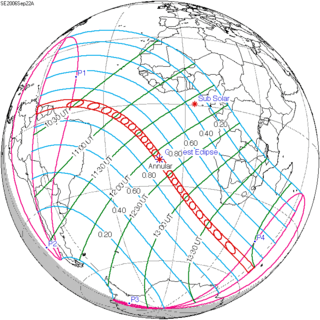 Annular |
-0.40624 | |
149_(cropped).jpg) From Jaipur, India |
2007 March 19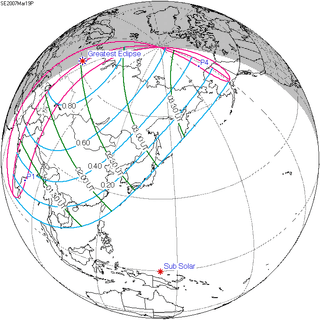 Partial (north) |
1.07277 | 154_(cropped).jpg) From Córdoba, Argentina |
2007 September 11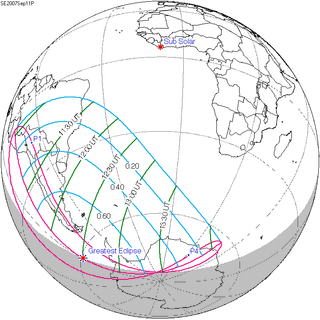 Partial (south) |
-1.12552 | |
Metonic series
The metonic series repeats eclipses every 19 years (6939.69 days), lasting about 5 cycles. Eclipses occur in nearly the same calendar date. In addition, the octon subseries repeats 1/5 of that or every 3.8 years (1387.94 days). All eclipses in this table occur at the Moon's descending node.[2]
| Octon series with 21 events between May 21, 1993 and August 2, 2065 | ||||
|---|---|---|---|---|
| May 20–21 | March 8–9 | December 25–26 | October 13–14 | August 1–2 |
| 98 | 100 | 102 | 104 | 106 |
| May 21, 1955 | March 9, 1959 | December 26, 1962 | October 14, 1966 | August 2, 1970 |
| 108 | 110 | 112 | 114 | 116 |
| May 21, 1974 | March 9, 1978 | December 26, 1981 | October 14, 1985 | August 1, 1989 |
| 118 | 120 | 122 | 124 | 126 |
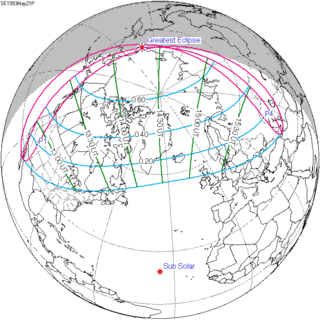 May 21, 1993 |
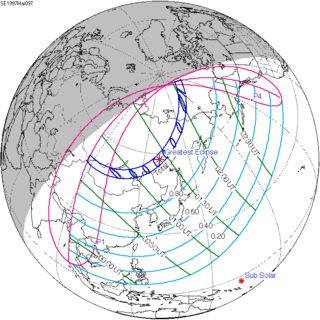 March 9, 1997 |
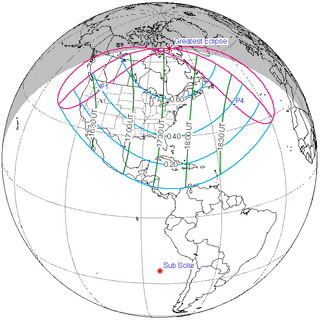 December 25, 2000 |
 October 14, 2004 |
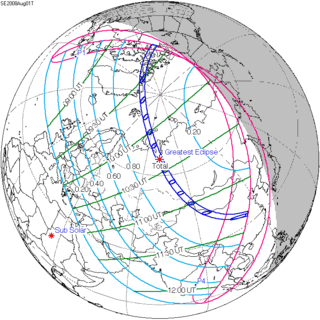 August 1, 2008 |
| 128 | 130 | 132 | 134 | 136 |
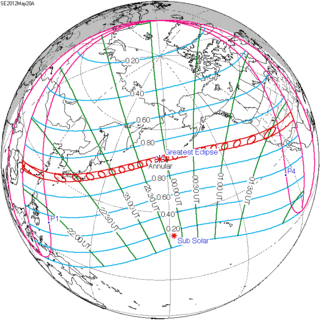 May 20, 2012 |
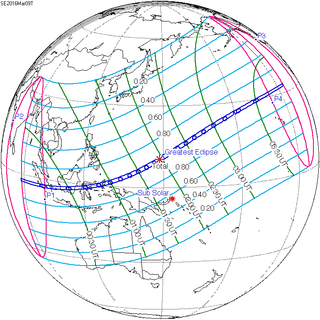 March 9, 2016 |
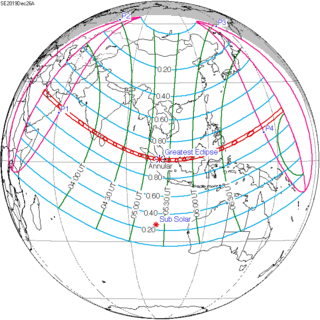 December 26, 2019 |
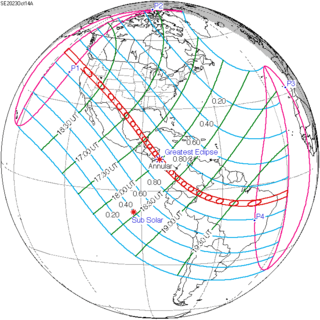 October 14, 2023 |
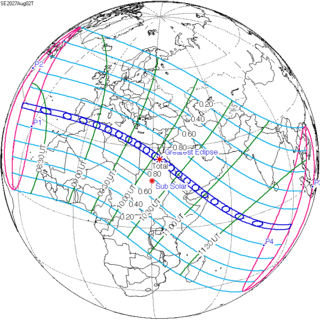 August 2, 2027 |
| 138 | 140 | 142 | 144 | 146 |
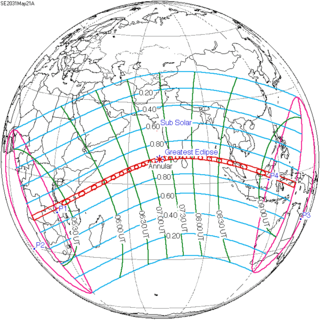 May 21, 2031 |
 March 9, 2035 |
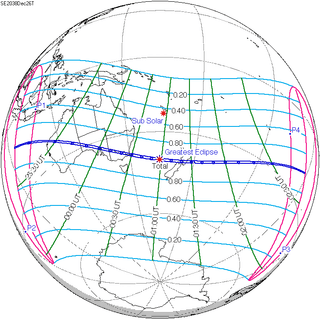 December 26, 2038 |
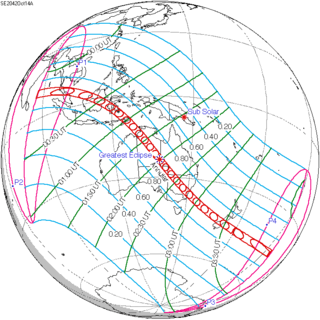 October 14, 2042 |
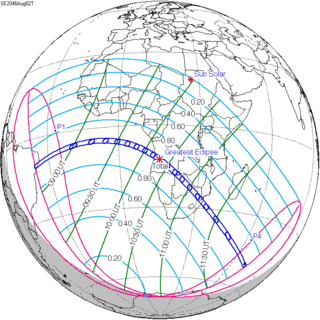 August 2, 2046 |
| 148 | 150 | 152 | 154 | 156 |
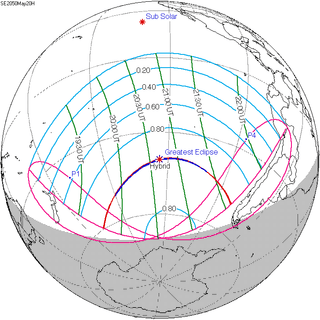 May 20, 2050 |
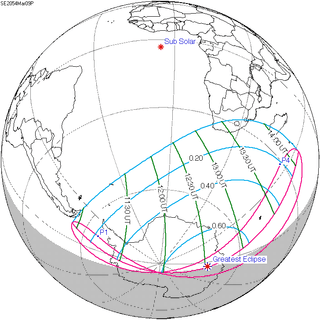 March 9, 2054 |
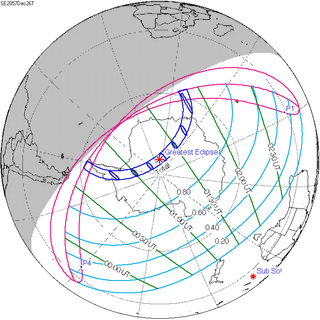 December 26, 2057 |
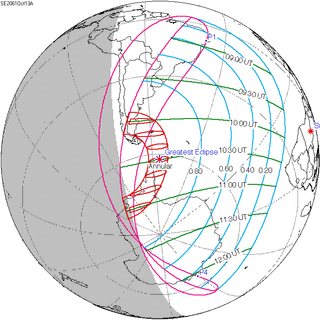 October 13, 2061 |
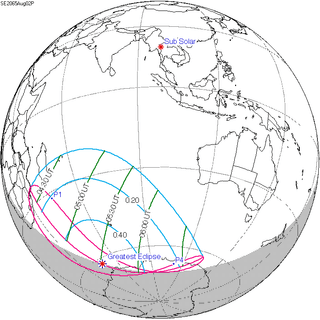 August 2, 2065 |
| 158 | 160 | 162 | 164 | 166 |
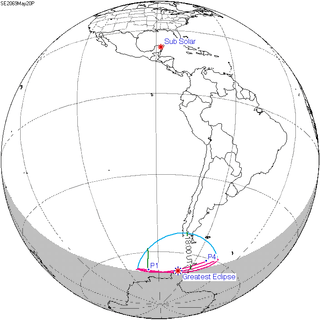 May 20, 2069 |
March 8, 2073 | December 26, 2076 | October 13, 2080 | August 1, 2084 |
References
- van Gent, R.H. "Solar- and Lunar-Eclipse Predictions from Antiquity to the Present". A Catalogue of Eclipse Cycles. Utrecht University. Retrieved 6 October 2018.
- Freeth, Tony. "Note S1: Eclipses & Predictions". plos.org. Retrieved 6 October 2018.
External links
- http://eclipse.gsfc.nasa.gov/SEplot/SEplot2001/SE2004Oct14P.GIF
- Partial Eclipse of the Sun - April 19 2004
Photos:
- Spaceweather.com eclipse gallery
- Partial Solar Eclipse on October 14, 2004, Nagoya, Aichi, Japan by Toshimi Taki
.jpg)
